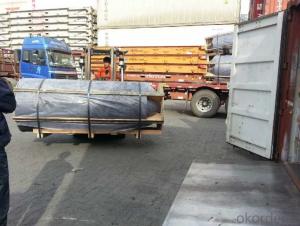When it comes to the world of metallurgy, the graphite electrode is a silent hero. It’s not as flashy as the molten metal it helps to shape, but it plays a crucial role in the process. And when we talk about machining these electrodes, it’s a dance of precision and efficiency. It’s not just about cutting and shaping; it’s about doing it in a way that saves time, money, and resources.
Let’s dive into the nitty-gritty of graphite electrode machining. It’s a process that’s as much art as it is science. The graphite itself is a wonder material, with its ability to conduct electricity and heat, and its chemical stability. But when it comes to machining, we’ve got to work with its unique properties to get the best results.
First off, let’s talk about the tools of the trade. The right machinery can make all the difference. High-speed machining centers with computer numerical control (CNC) are the go-to for this job. They offer precision, speed, and the ability to handle complex shapes that would be a nightmare with manual methods. And let’s not forget the cutting tools themselves. Diamond-coated tools are the champions here, as they can handle the hardness of graphite without a sweat.
Now, let’s get into the heart of the matter: the machining process. It’s not just about pushing buttons and watching the machine do its thing. There’s a rhythm to it, a flow that comes from understanding the material and the machine. The process starts with the design, where we plan out the electrode’s shape and size. This is where the computer-aided design (CAD) software comes into play, allowing us to visualize and refine our plans.
Once we’ve got our design, it’s time to set up the CNC machine. This is where the real magic happens. We input our design into the machine, and it translates that into a series of precise movements and cuts. The machine does the heavy lifting, but we’ve got to keep an eye on it, making sure everything is going according to plan.
One of the key aspects of this process is the electrode’s geometry. It’s not just about making it pretty; it’s about making it functional. The geometry affects how the electrode heats up and conducts electricity, which in turn affects the quality of the molten metal. So, we’ve got to pay attention to the details, like the taper angle and the surface finish.
Speaking of surface finish, that’s another critical point. A smooth, polished surface is essential for the electrode’s performance. It reduces the contact resistance and ensures a more efficient transfer of electricity. And let’s not forget the importance of edge quality. Sharp edges are not only aesthetically pleasing, but they also contribute to better electrical contact.
But here’s the thing: machining is just the beginning. After the electrodes are shaped, they need to be tested and inspected. This is where we make sure everything is up to snuff. We check for any defects, measure the dimensions, and test the electrical conductivity. It’s a meticulous process, but it’s essential for ensuring the quality of our electrodes.
Now, let’s talk about efficiency. We’ve all heard the buzzword, but what does it really mean in the context of graphite electrode machining? It means minimizing waste, reducing downtime, and getting the most out of every machining cycle. It’s about optimizing the process, from the selection of materials to the design of the electrode, to the machining itself.
One way to improve efficiency is by using advanced machining techniques. For example, high-speed machining can reduce the time it takes to shape an electrode, while minimizing the heat generated during the process. This not only saves time but also helps maintain the integrity of the graphite.
Another aspect is the use of automation. By automating the machining process, we can reduce human error and increase consistency. This is especially important when we’re dealing with large batches of electrodes. Automation also allows for better monitoring and control of the process, ensuring that everything is running smoothly.
And let’s not forget about material utilization. By optimizing the design and layout of the electrodes, we can reduce the amount of material wasted during machining. This not only saves money but also contributes to a more sustainable process.
In conclusion, graphite electrode machining is a complex and fascinating process. It’s a blend of technology, craftsmanship, and a deep understanding of materials. By focusing on efficiency, precision, and quality, we can push the boundaries of what’s possible and create electrodes that are not just good, but great. So, the next time you see a piece of molten metal taking shape, remember the unsung hero behind the scenes – the graphite electrode.

